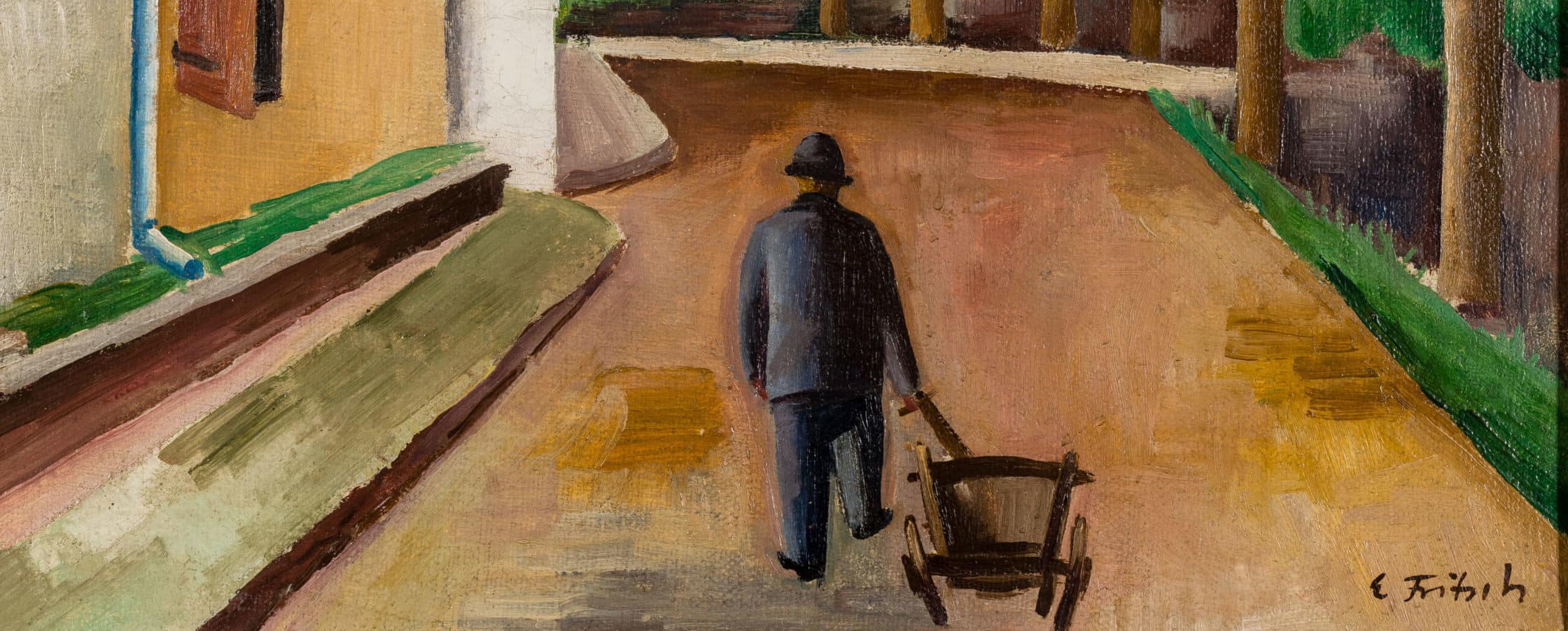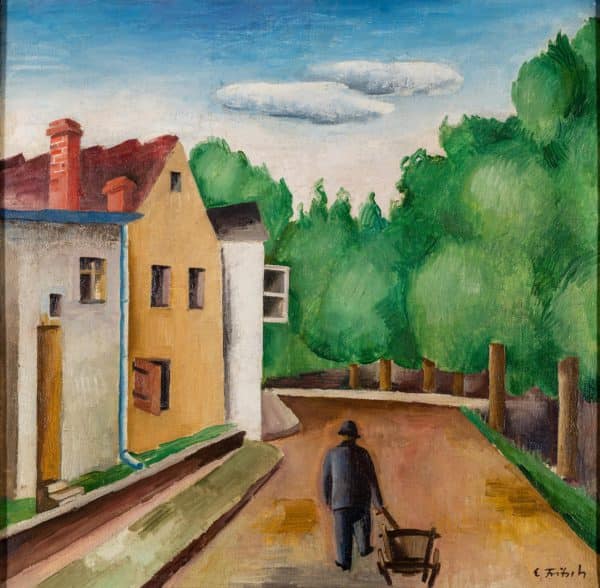

The artist Ernst Fritsch first trained in handicrafts. From 1911 to 1914 he attended the courses run by Emil Doepler in decorative painting at the Academy of the Arts and Crafts Museum in Berlin. He also studied at the Royal Art Academy in Berlin, where he completed a diploma as an art teacher. After serving in the First World War, Fritsch joined the Berlin Secession in 1919, later joining the Association of German Artists and the North German Secession. In 1921, he joined the November Group in Berlin. The Academy in Berlin awarded Fritsch the Rome Prize in 1927, its Grand State Prize for Painting; after visiting Paris, this Prize enabled Fritsch to live and study in the Villa Massimo in Rome.
Fritsch returned to Berlin in 1929, though his art began to encounter more and more opposition. After the large-scale retrospective of the Berlin Secession in 1933, Fritsch was banned from exhibiting. That same year, his works were shown in an exhibition in Nuremberg in which the individual rooms were given titles such as “artistic chamber of horrors” in order to slander the artists.
From 1937 onwards, his works were confiscated, and many of them were burned by the National Socialists. Despite his status as a discredited artist, Fritsch taught on a provisional basis at the Berlin School of Applied Arts from 1939 to 1941, after which he had to return to military service until the end of the Second World War. After the Second World War he taught as a professor at the Academy of Visual Arts in Berlin.
